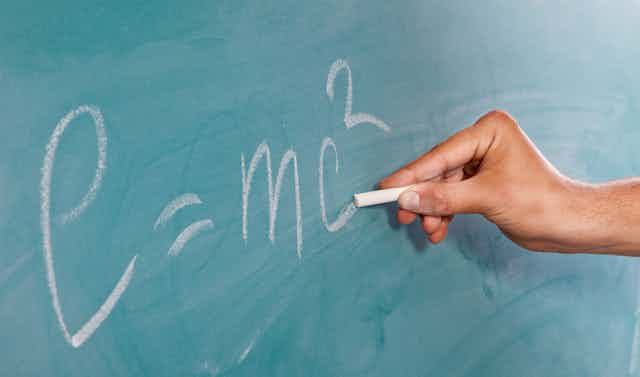School students today are taught physics based on obsolete theories and outmoded ways of thinking. Instead of the truth, most learn a naive simplification - the 300 year-old Newtonian physics, itself based on disproved 2,300 year-old Euclidean geometry.
But why?
Simply put, the thinking has long been that one can’t learn the truth without first learning the old theories as a foundation. Only a select few go on and learn the correct theories at university.
But physicists and educators in Western Australia have been putting this theory of science education to the test: they have been bringing the concepts of Einsteinian physics to primary schools.
Naive understanding
Our modern understanding of the universe is based on two theories of physics developed by Einstein – the theory of gravity, called General Relativity and the theory of particle interactions called Quantum Mechanics.
Einsteinian physics is the culmination of centuries of debate. Even though most of us still hold on to Newton’s idea that space, time and matter are independent and separable entities, today physicists know that space, time and matter are all interconnected.
We know, too, that Euclidean geometry is wrong, or at least is only an approximation.
A science experiment
A colleague and I set out to discover whether 11 to 12 year-olds could understand these Einsteinian ideas.
We explored the history of ideas about space from Pythagoras to Newton to Einstein. We discussed the meaning of a straight line and learnt that the path of a light beam is the only arbiter we have for straightness.
The students drew triangles and traced the paths of parallel lines on balloons. They saw that some of the Euclidean concepts that they had already learnt were only true if space was flat.
For example, they found out that the sum of the angles of a triangle is variable depending on its size, and that parallel lines can intersect.
Then we went on to study Carl Friedrich Gauss’s unsuccessful experiment to measure the shape of space in Bavaria 200 years ago, the the great Australian eclipse expedition to Wallal Downs Station south of Broome in 1922, where the curved space around the sun was confirmed.
A few sessions later, using simple graphs and Einstein’s assertion that freely falling trajectories are always the shortest paths in spacetime, the children discovered the key Einsteinian prediction that time depends on your height above the ground.
They learnt that their GPS navigators only work because the satellites are corrected for this time warp created by Earth.
This work culminated in a play performed by the Year Six students for the School of Physics at the University of Western Australia. The play, called Free Float, was a lighthearted exploration of the ideas of space, time and gravity where the students clearly demonstrated their understanding of Einstein’s concepts.
Too much too young
One of the curious things about our experiment was that, unlike many adult audiences, the students showed no sign of bewilderment or surprise.
They learnt to think about spacetime. They learnt to appreciate that falling from a tower and floating in the space station are really the same thing. They easily grasped the reality that parallel lines can cross and that the perimeter of a circle is not exactly Pi times diameter.
Most importantly, they thought that it was really interesting and didn’t think they were too young to learn these concepts.
Currently our team, which has been joined by Professor Mario Zadnik and Professor Bernard Carr, is extending the program and moving into the teaching of quantum mechanics as well.
Not good enough
Some science teachers say there’s no reason to teach Einsteinian physics: Newtonian physics is good enough.
But should Creationism replace Darwinian evolution just because it’s good enough? In both cases, the truth is important.
We owe it to our children to teach our best understanding of reality instead of false ideas. It’s 90 years since we knew definitively that space is curved: surely this is long enough for schools to catch up.
Scientific adventure
Modern physics includes the spooky weirdness of quantum mechanics and mysteries that we don’t understand. It challenges the professionals; there are open questions; there’s much more to discover in this adventure.
How much more exciting is it to learn about an adventure and new discoveries than to learn old stuff?
No wonder our kids are turning off science. They learn more modern physics from The Big Bang Theory sitcom than they do in the classroom.
Our experiment shows that 11-year-old brains can easily assimilate these new ideas, and often better than old brains can. And already we are finding the same is true with our program on quantum mechanics.
But we are not setting a high bar here – we are not trying to turn pupils into young physics geniuses. The curriculum material and videos in our programs show that you don’t have to be a physics boffin to understand the world.
Later they can learn that the classical ways are useful approximations. But for now, we are simply taking the trouble to find appropriate and fun ways to introduce students to the real world of physics.
You can read more about the Science Education Enrichment Project here.

